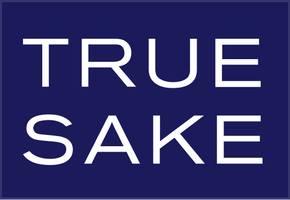The 2018 International Wine Challenge (IWC)
I decided to write my review of the 2018 IWC until after the awarding of the Grand Champion Trophy in London last week. It gave me some time to reflect on what was perhaps the best of the IWC events to date. In a word it was simply awesome.
First, let me say that this judging event is by far the most superior judging competition for sake in the world! You mean even better than the Japanese National Sake Competition? You bet! As I hope that you are fully aware by now that competition is for breweries to compete with special competition sakes that never make it to the public. Seriously! Good for the brewery, but bad for the consumers. The point of making sake is to drink sake. If a brewery only produces Gold Medal sake for the competition, but does not make great sake on a daily basis then that should tell you something. The IWC sake judging competition is by the people for the people and how cool is that? So who are the people?
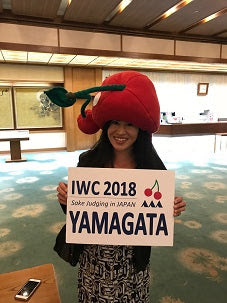
I’ll start with the judges this year as we had so many amazing sake sleuths working hand in hand to determine what is market worthy gold medal sake! Sweden, Holland, Australia, Great Britain, Germany, Spain, Singapore, Hong Kong, Malaysia, New Zealand, Taiwan, Canada, France, United States, and of course Japan all had palates in motion for the 2018 competition in Yamagata Prefecture Japan. In total 58 sake judges from over 16 nations judged a record number of sake entrees over a four-day period. And let’s just say we judged some pretty amazing sakes.
What is a judge? It’s a very good question, because there is no real defined criterion that is a “must” to achieve for judge status. Meaning one does not have to be an accredited Sake Sommelier or a Sake Professional or Sake Associate etc. But these titles don’t hurt. Way back in the beginning when we started the sake side of the IWC, I believe that I was the only foreign Kikisake-shi on the judging panel. Most of the other judges were wine guys. So titles didn’t mean much, but your palate did! Those days were brutal too as we used a “100-Point” wine system with a few Japanese judges and a few “western” judges who really didn’t see eye to eye on what each category should taste like! It was very fun and extremely interesting to be a part of the evolution of what palates from all over the world thought about sake.
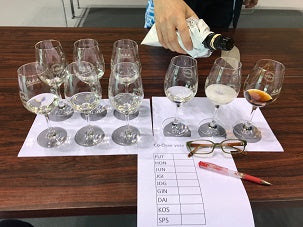
This year I am certain to say that we had more accredited judges than ever before in the history of the IWC. I believe this is a good thing for sure, but it’s not the end all be all! Just because you have a title it doesn’t guarantee that you will pick the best sakes. There is a lot of palate play in play! That’s why the IWC team is always looking and studying the patterns of the judges. It’s an internal quality control system that allows the sakes to speak for themselves rather than very “Titled” judges. I think that this is one of the best strengths of the IWC tasting model. Judges are ranked as Panel Chairs, Senior Judges, Judges, and Associate Judges. And then there are 5 Co-Chairs that oversee the results of the aforementioned.
The absolute best aspect of the IWC and its structure is that the best sakes will always find their way to the top! The “system” allows for the sakes to speak for themselves. The methodology for tasting and re-tasting flighting and re-flighting each and every sake allows it without a doubt a fair and balanced playing field to compete against similar sakes. So in the end the sakes select themselves and not the judges. The system works, and it’s pretty damn cool!
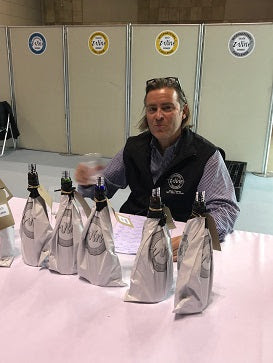
I do not like speaking negatively about anything in the sake world. I just don’t. It’s bad karma, and I respect sake too much to pick and poke at certain aspects that I may not agree with, but many do. One such “knock” is that judging competition are rigged! It is easy to say, “How does that brewery win and this one doesn’t?” It’s even easier to say, “That sake does not deserve a Gold Medal.” But people still do. It’s the nature of the beast. I will say this, and I am as close to the workings as a Co-Chair can be, there is absolutely no way the IWC is rigged or can be questioned for skewing results. Not a chance! And that is why I love this event so much. That and the fact that it is a competition for sakes that are available to the most important people, the end users.
Okay, time for more numbers. This year in Yamagata we had 1639 sakes submitted for the judging. There were 97 Gold medals awarded for a 5.9% rate. Furthermore the Ginjo category had the highest rate of Golds with 7 Golds out of 40 entrants (17.5%), and the Junmai category had the lowest Gold Medal rate with 12 Golds out of 337 entrants (3.6%). And it may seem like bragging if I said that I could have told you that during the tasting, but I totally noticed it. Every year it’s different. Certain categories just don’t show well. Last year the Honjozo category was all over the place, and this year it was the Junmai category. You could just taste it! There was no underlying theme or framework of independently tasty Junmai sakes. I kept waiting for a good flight to judge and it never showed up, which was funny because the year before in London the Junmai category rocked and even won the Championship Trophy for the best sake in the entire IWC. Oh well!
Here are some more Gold Medal statistics to chew on: The Futsushu Category had 12 Golds out of 76 entrants (15.8%), the Honjozo Category had 5 Golds out of 75 entrants (6.67%), the Junmai Ginjo category had 13 Golds out of 323 entrants (4.0%), the Junmai Daiginjo category had 22 Golds out of 441 entrants (5.0%), the Daiginjo category had 14 Golds out of 223 entrants (6.3%), the Sparkling Sake category had 8 Golds out of 66 entrants (12.1%), and the Koshu category had 4 Golds out of 59 entrants (6.8%). That is some seriously tough loving! It’s not like the IWC hands out Gold Medals willy nilly!
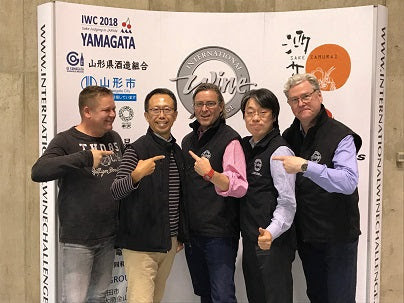
What spoke to me? Several elements about this year’s IWC jumped out and begged to be noticed. First I was so very proud to see not one, but two Tetra-pak sakes win Gold medals in the Futsushu category. That is awesome! The entire Futsushu category was superb, and as a retailer that gives me so much hope as we need value sakes of good making. Secondly, I thought the Sparkling Sake category did well as a group. I don’t know how much “Copycat” producing goes on in the sake world, where one brewery will taste and try to make a sake that tastes just like a Gold Medal sake, but the overall similarities in this category really made for a quality upgrade from years past. Lastly, I was extremely impressed with the media popularity that this IWC garnered in Japan. Actually, it was astounding! There was national TV coverage every night and every newspaper carried story after story of how the IWC progressed. Oh, and I almost forgot! Yamagata Prefecture did a superb job hosting the IWC. They knocked themselves out and went that extra mile for the betterment of the event! And without naming names one very popular Yamagata sake maker took it upon himself to make a great event for the IWC and he succeeded massively! So please do me a favor and purchase a lot of Dewazakura sake the next time you shop at True Sake.
